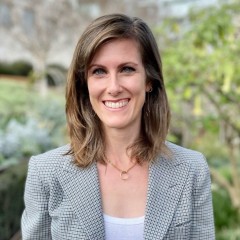This post is an edited excerpt from "Race Brokers: Housing Markets and Segregation in 21st Century Urban America," which examines racial inequality in the housing market through the lens of sales and finance professionals in Houston.
For example, in April 2015, Jay, a White middle-aged real estate agent, invited me to his real estate brokerage in Houston’s Montrose neighborhood. He wanted to show me a contract he had drawn up for a house he had listed for sale in Near Northside, a Latinx neighborhood just north of downtown. After inviting me into the conference room near the front of the brokerage office space, Jay explained the terms of the contract. As he did so, he described who the buyers and sellers were and also provided running commentary on Near Northside and its surrounding areas, including several White neighborhoods west of Near Northside.
“In the last six months,” he said, “I’ve had lots of young hipsters calling. People are being pushed out of the Heights, Norhill, and Brooke Smith. That’s the natural progression, to come to Near Northside. The tide of hipsters is coming.” Jay did not think that Near Northside would stay a Latinx neighborhood for long.
Two months after I observed Jay at his brokerage, I met and interviewed Diego, a Mexican-American appraiser, at a diner in southeast Houston. Diego explained that he tries not to allow “ethnicity” to come into his appraising. But he went on to say that he thinks racial segregation exists because Black, Latinx, and White individuals want to live near “someone who is your equal.” For this reason, he explained, Black individuals wanted to live in the Black Third Ward neighborhood “amongst their peers—not my natural peers—but young Black urban professionals that are buying in that area.” From Diego’s perspective, it seemed “natural” that Black professionals wanted to live near Black peers and that he and other Latinx individuals—such as his sister, who had purchased a home in a Latinx neighborhood—wanted to live near Latinx peers.
Then, in July 2015—a month after I interviewed Diego—I met Lauren, a White real estate agent, at her brokerage on the west side of Houston. She led me into a large multipurpose room that had several long tables and dozens of chairs set up in anticipation of a continuing education class. We sat together at one of these tables for our interview. Lauren told me that her White clients make housing decisions based on neighborhood racial composition:
But, you know, I definitely see in clients when I’m showing them properties in some areas that they think, “Oh, you know, we love the look of this neighborhood, we love the location. You know we love the price.” And I’ll go and show them and they’ll make comments like, “Nobody here looks like me.” And, you know, I think that’s natural. I don’t think that’s necessarily a racist thing.
Even as real estate professionals describe this situation as “natural,” it is anything but, particularly given recent legal and social trends.
Ingrained practices
Thus, when considering the housing market and the role real estate professionals play in shaping housing opportunities and urban residential landscapes, the key question is not whether racial segregation is an inevitable, or natural, outcome of market exchanges or whether racism contributes to racial segregation. Rather, it is how racism in real estate contributes to racial segregation in twenty-first-century urban America.
The question is pressing. Racial segregation poses serious problems for American society more broadly. Among many other problems, it is tied to ongoing wealth, educational, and health inequalities; intensified and more violent policing of Black and Latinx people; social isolation and lack of interracial contact; and sociopolitical conflict.
The system of racial segregation continues to influence how everyday Americans experience their lives, with dire consequences for communities of color. Alongside other forms of inequality, racial segregation is at the heart of unequal educational opportunities, wealth accumulation, and criminal justice system encounters. For example, relative to their peers in otherwise equal Black and Latinx neighborhoods, children in White neighborhoods are disproportionately likely to access higher quality educational opportunities and achieve higher educational attainment.
This book examines how racism enables racial segregation to persist in order to denaturalize and chip away at this inequality. To do so, it examines real estate professionals, a group of individuals at the heart of the housing market.
Many of these professionals, including housing developers, real estate agents, mortgage bankers, and appraisers, often portray their work and its relationship to racial segregation as a passive—and not necessarily color-blind—response to market dynamics or the purportedly “natural” way people prefer to live. But as I studied these individuals and learned about their work from their perspectives, I came to the opposite conclusion.
Instead, housing market professionals—especially those who are White—actively create racially unequal housing markets and urban landscapes. They do so by using racist ideas to inform how they implement professional norms and policies and how they distribute their professional resources, including authority, knowledge, and capital. These housing market professionals are race and racism brokers: They make a hierarchy of racial categories socially and materially real by ensuring that people who fall into what they perceive as different categories receive unequal housing opportunities. Despite their insistence otherwise, housing market professionals are the visible hands of the housing market, and they often use racism to re-create and exacerbate racial segregation in their everyday work.
Brokers or breakers of racism?
However, among the housing market professionals I studied, one small group—almost all individuals of color—were a sharp foil for how their White counterparts and, at times, counterparts of color actively contribute to the process of segregation. They drew on equitable, people-affirming ideas that emphasized the worth and deservingness of people of color and used their experiences and observations of racial discrimination to generate alternate professional strategies that better served communities of color. Importantly, at the same time they subverted real estate business as usual, these professionals built economically profitable businesses. These professionals also brokered race. But they did so through reference to racial equity, thus undermining racism and mitigating, rather than exacerbating, racial inequality in the housing exchange process.
Housing market professionals who used the racist market rubric in their everyday work perceived White individuals and neighborhoods as the best, most desirable, most valuable, most educated, least dangerous, and most lucrative for the least amount of work. Simultaneously, they perceived individuals and neighborhoods of color as the least desirable, low income, least educated, dangerous, culturally or morally deficient, and a lot of unwanted work. Almost all White housing market professionals in my study relied on aspects of the racist market rubric when they interpreted people (consumers and each other); properties; and their professional norms, policies, and practices.
When the race brokers I studied adopted ideas from the people-oriented market rubric, they countered such racist discourse and routines. Such race brokers circulated discourse and established routines that emphasized the worth and inherent equality of individuals and neighborhoods of color. Then, they made connections between individuals and resources through these perceptions, undermining the racist market logic of their White counterparts as well as aspects of racial segregation. They were thus brokers of race—in alternate, counter- and people-affirming forms—and breakers of racism.
Although racial segregation remains entrenched through the interlocked racist ideas, actions, and policies of multiple sets of professionals and government and private agencies, the racism breakers I studied in the real estate sector demonstrated that it is possible to foster a more equitable housing market and intervene in America’s racially segregated landscape. Whereas their racism-brokering counterparts, especially White housing market professionals, routinely perceived and assumed the inferiority of individuals and neighborhoods of color and then acted on such racist assumptions, racism breakers shared a commitment to themselves and their communities of color as worthy and wonderful.
Their commitment highlighted and denaturalized the racism in which their colleagues participated. Moreover, racism breakers’ alternate strategies pointed toward other ways of doing real estate. If routinized, such alternate strategies (e.g., flat-fee real estate brokerage) could make it more difficult for other professionals to use the racist market rubric and broker racism in their work. The real estate professionals of color I studied—their experiences, perceptions, and strategies—are thus the foundation for the policy recommendations I suggest at the end of the book.
These recommendations return to the fundamental point of this book: Racial segregation is not a natural or neutral feature of urban landscapes. Race Brokers shows how housing market professionals are at the center of actively constructing racial segregation with racist tools. In so doing, it points to ways this process can be interrupted with the aim of fostering equitable opportunities for all Americans.
"Race Brokers: Housing Markets and Segregation in 21st Century Urban America," is available via Oxford University Press.
Elizabeth Korver-Glenn is an assistant professor of sociology at the University of New Mexico. Her award-winning research has been published in American Sociological Review, Social Problems, Social Currents, Sociology of Race and Ethnicity, and City & Community, among other peer-reviewed outlets.


